LinkedIn Etiquette: Essential Do’s and Don’ts
Master LinkedIn with our essential do’s and don’ts guide. Boost your professional presence today and connect like a pro!
Crafting a Compelling LinkedIn Profile Summary
Do: Highlight Your Unique Value Proposition
Your LinkedIn profile summary should clearly communicate what makes you stand out in your field. Begin with a strong statement that captures your professional identity and the unique value you bring to potential employers or connections.
Consider what skills, experiences, or perspectives set you apart and how they align with your career goals.
Use specific examples to illustrate your achievements and the impact you’ve made in previous roles. Quantifiable results, such as increased sales percentages or successful project completions, can effectively demonstrate your capabilities and reinforce your value proposition.
Do: Keep It Concise and Engaging
While it’s important to provide enough detail to convey your expertise, your summary should remain concise and to the point.
Aim for around 3-5 short paragraphs that are easy to read and digest. Avoid industry jargon or overly complex language that might alienate readers unfamiliar with your field.
Engage your audience by writing in a conversational tone that reflects your personality.
This can help make your profile more relatable and memorable to those who view it. Remember, your summary is often the first impression you make, so make it count.
Don’t: Overlook the Importance of Keywords
Keywords are crucial for making your profile discoverable to recruiters and hiring managers searching for candidates with your skill set.
Identify the key terms and phrases relevant to your industry and incorporate them naturally throughout your summary. This can improve your visibility in LinkedIn search results and increase your chances of being found by the right people.
However, avoid keyword stuffing, which can make your summary difficult to read and appear inauthentic.
Balance is key; ensure that your use of keywords enhances rather than detracts from the overall quality of your writing.
Don’t: Neglect to Update Regularly
Your LinkedIn summary should evolve as your career progresses. Regularly update it to reflect new skills, experiences, and achievements.
This not only keeps your profile current but also signals to your network that you are active and engaged in your professional development.
Set a reminder to review your summary at least once a quarter, or whenever you experience a significant career change. Keeping your profile updated can help you maintain a strong professional presence and capitalize on new opportunities as they arise.
Building a Strong Professional Network on LinkedIn
Do: Optimize Your Profile
Your LinkedIn profile is your digital business card.
Ensure that your profile picture is professional and your headline clearly states your current role or career aspirations. A well-crafted summary that highlights your skills, experiences, and career goals can make a strong first impression.
Include relevant keywords throughout your profile to increase visibility in searches.
Regularly update your profile to reflect new skills, certifications, or job changes.
Don’t: Send Generic Connection Requests
Avoid sending the default connection request message. Personalize your invitations by mentioning how you know the person or why you want to connect.
A tailored message shows genuine interest and increases the likelihood of your request being accepted.
Refrain from connecting with people randomly. Focus on building a network that aligns with your professional goals and interests.
Do: Engage with Your Network
Engagement is key to maintaining a strong network.
Regularly interact with your connections by liking, commenting on, or sharing their posts. This not only keeps you visible to your network but also fosters relationships.
Participate in LinkedIn groups relevant to your industry to connect with like-minded professionals and share your insights.
Don’t: Overpost or Spam
While staying active is important, avoid overposting or sharing irrelevant content.
Quality over quantity should be your guiding principle. Posting too frequently can overwhelm your connections and lead to disengagement.
Refrain from using LinkedIn solely as a platform for self-promotion.
Instead, focus on providing value and sharing content that benefits your network.
Do: Offer and Request Recommendations
Recommendations add credibility to your profile. Offer to write recommendations for colleagues or clients, and in return, request them to do the same for you.
A well-written recommendation can highlight your skills and work ethic.
Ensure that the recommendations are specific and reflect your professional achievements and contributions.
Don’t: Ignore Connection Follow-Ups
After connecting with someone new, follow up with a message to express your appreciation and suggest how you might collaborate or assist each other. This sets the tone for a meaningful relationship.
Avoid ignoring messages from your connections.
Timely and thoughtful responses help maintain a strong and active network.
Engaging with Relevant Content on LinkedIn
Do: Share Insightful Comments
Engaging with content on LinkedIn by sharing insightful comments can significantly enhance your visibility and credibility. When you come across a post that resonates with your expertise or interests, take the time to craft a thoughtful response.
This not only shows your engagement but also positions you as a knowledgeable professional in your field.
Ensure your comments add value to the conversation. Instead of simply agreeing with the post, offer additional insights, ask questions, or share relevant experiences.
This approach encourages further discussion and can help you connect with like-minded professionals.
Do: Like and Share Strategically
Liking and sharing content on LinkedIn should be done strategically to reflect your professional interests and values. When you like or share a post, it becomes visible to your network, so choose content that aligns with your personal brand and professional goals.
Sharing content with a personal note or commentary can further engage your audience.
Explain why you found the content valuable and how it relates to your industry or career. This not only provides context but also invites your network to engage with the content more deeply.
Don’t: Engage with Irrelevant Content
While it’s important to be active on LinkedIn, engaging with irrelevant content can dilute your professional image.
Avoid liking, commenting on, or sharing posts that do not align with your career goals or industry. This can confuse your audience about your professional interests and reduce the impact of your engagement.
Instead, focus on content that is directly related to your field or that offers significant value to your network.
This targeted approach ensures that your engagement is meaningful and reinforces your professional brand.
Don’t: Overdo Engagement
While engagement is crucial, overdoing it can have negative consequences. Constantly liking or commenting on every post can overwhelm your network and may come across as insincere or spammy.
It’s important to maintain a balance and engage with content that truly matters to you.
Set a schedule or limit for your engagement activities to ensure that each interaction is genuine and impactful. This strategy helps maintain your professional image and ensures that your contributions are valued by your network.
Avoiding Common Mistakes on LinkedIn Profile
Do: Optimize Your Profile Picture
Your profile picture is the first impression you make on LinkedIn.
Ensure it is professional, clear, and recent. A high-quality headshot with a neutral background is ideal.
Avoid using casual or overly stylized photos that might not convey professionalism.
Don’t: Leave Your Headline Generic
Avoid using the default job title as your headline. Instead, craft a compelling and descriptive headline that highlights your expertise and what you bring to the table.
This is your opportunity to stand out and attract the right connections.
Do: Customize Your LinkedIn URL
Customizing your LinkedIn URL makes your profile more professional and easier to share. A personalized URL is not only aesthetically pleasing but also enhances your personal brand.
Edit your URL in the profile settings to reflect your name or professional alias.
Don’t: Ignore the Summary Section
The summary section is your chance to tell your professional story. Avoid leaving it blank or using a generic description.
Instead, write a compelling narrative that highlights your achievements, skills, and career goals. Use this space to engage readers and encourage them to learn more about you.
Do: Highlight Your Achievements
When listing your work experience, focus on achievements rather than just duties.
Use quantifiable results to demonstrate your impact in previous roles. This approach not only showcases your skills but also provides potential employers with a clear understanding of your capabilities.
Don’t: Overlook Endorsements and Recommendations
Endorsements and recommendations add credibility to your profile.
Avoid neglecting these features. Actively seek endorsements from colleagues and request recommendations from supervisors or clients who can vouch for your skills and work ethic.
These elements can significantly enhance your profile’s attractiveness.
Do: Keep Your Profile Updated
Regularly update your profile to reflect your current skills, experiences, and accomplishments. An outdated profile can give the impression of inactivity or neglect.
Make it a habit to refresh your profile with new information, ensuring it accurately represents your professional journey.
FAQ
Q1: What are the key do’s and don’ts when creating a LinkedIn profile for business networking?
A1: When creating a LinkedIn profile for business networking, it’s important to focus on both presentation and content. Do ensure your profile picture is professional and approachable, as first impressions matter. Use a clear, concise headline that reflects your current role or expertise. Customize your URL to make it easier to share. Don’t leave sections incomplete; a fully filled-out profile increases your visibility and credibility. Avoid using jargon or buzzwords excessively, as they can detract from the authenticity of your profile. Regularly update your profile to reflect your latest achievements and skills.
Q2: How can I effectively use LinkedIn to build and maintain professional relationships without coming across as self-promotional?
A2: To effectively use LinkedIn for building professional relationships, focus on genuine engagement rather than self-promotion. Do comment on and share relevant industry articles or posts, adding your insights to foster meaningful discussions. Personalize connection requests with a brief message explaining why you’d like to connect. Don’t spam your connections with constant self-promotional content; instead, share valuable information or resources that can benefit your network. Regularly engage with your connections by congratulating them on achievements or commenting on their updates, which helps maintain relationships organically.
Q3: Are there any recommended books for mastering LinkedIn strategies in a business context?
A3: Yes, there are several books that can help you master LinkedIn strategies for business. “LinkedIn Unlocked: Unlock the Mystery of LinkedIn to Drive More Sales Through Social Selling” by Melonie Dodaro offers practical tips on leveraging LinkedIn for sales and networking. Another useful read is “The LinkedIn Code: Unlock The Largest Online Business Social Network to Get Leads, Prospects & Clients for B2B, Professional Services and Sales & Marketing Pros” by Melonie Dodaro, which provides insights into creating a robust LinkedIn strategy. These books offer actionable advice for maximizing LinkedIn’s potential in a business context.
Takeaway
Ready to level up your skills and boost your career? Take the first step today by enrolling in our online course, downloading our powerful productivity tool, or subscribing to receive weekly career tips. Start your journey towards success now!











Comments